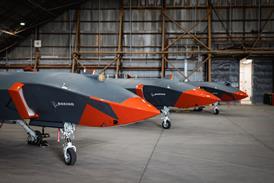The US Congress’ tussle over the 1,500h pilot-training rule took an interesting turn on 18 July when a senator proposed requiring that new airline pilots have hundreds of hours in specific aircraft classes and in specific flying conditions.
The bill, introduced by Tammy Duckworth, Democratic chair of the Senate aviation subcommittee, comes amid a seemingly escalating battle in Washington over changes floated to US pilot-training requirements.
Changes have been proposed as part of Congress’ next Federal Aviation Administration funding bill, which is now working through the US House and Senate.

Duckworth’s proposal takes aim at the Regional Airline Association (RAA), which is among parties lobbying for changes to the 1,500h rule.
The measure, which has been in effect for over a decaede, requires most new airline pilots to have 1,500h of flight time before applying to work on an airline flight deck. It has staunch support from democrats and pilot unions.
Duckworth’s bill would stipulate that the 1,500h include 900h of cross-country flying, 200h of night flying and 75h of instrument flying. It would also require new pilots have 375h of “flight time in the class of airplane for the rating sought”.
“Certain organisations, such as the Regional Airline Association, have expressed concern over the quality of flight hours that aspiring pilots accrue,” Duckworth’s office says. The bill “would require FAA to enhance existing regulations governing aeronautical experience standards for airline transport pilot certification”.
Indeed, the RAA and other critics, including former FAA administrators, say the 1,500h rule forces pilots to log far too much time in small planes – flying that leaves them ill-prepared to operate large passenger jets. They say the rule has significantly worsened a pilot shortage to the benefit of existing pilots.
The RAA thinks solutions include allowing pilots to count structured training at airlines, and more simulator time, toward their 1,500h.
How Duckworth’s proposal might work in practice remains unclear. Some sources think it could impose more burdens on new pilots, such as by requiring they log more hours flying aircraft in bad weather.
The proposed 375h in “the class of airplane for the rating sought” has raised eyebrows. Details are unclear but that provision would seemingly require new pilots have more time in more-expensive aircraft, like multi-engined types.
Asked about additional financial burdens possibly imposed by her proposal, Duckworth’s office declines to comment.
The RAA says, “While the senator didn’t seek our input on the bill, we hope her bill signals an understanding that 1500h is not working the way Congress intended.”
Pilot training requirements have split the US Congress and held up an agreement on the FAA’s next spending bill. Lawmakers have aimed to have the bill signed into law before the FAA’s current funding expires at end-September.
The Allied Pilots Association (APA), which represents American Airlines’ pilots, says it is reviewing Duckworth’s measure. It declines to comment about specifics but concedes that the proposed instrument-flight-time requirement would be “challenging” for new pilots.
But APA views Duckworth’s proposal as refreshing because it seeks to increase the experience of new pilots, not “lower the bar, as the Regional Airline Association is lobbying hard for”.
Neither the Air Line Pilots Association, International, nor airline trade group Airlines for America, responded to requests for comment.
The US is unique among countries for requiring most new commercial pilots have 1,500h of flight experience prior to taking airline jobs. Unions and other supporters say the 2013 rule is largely why US airline travel is so safe.












































